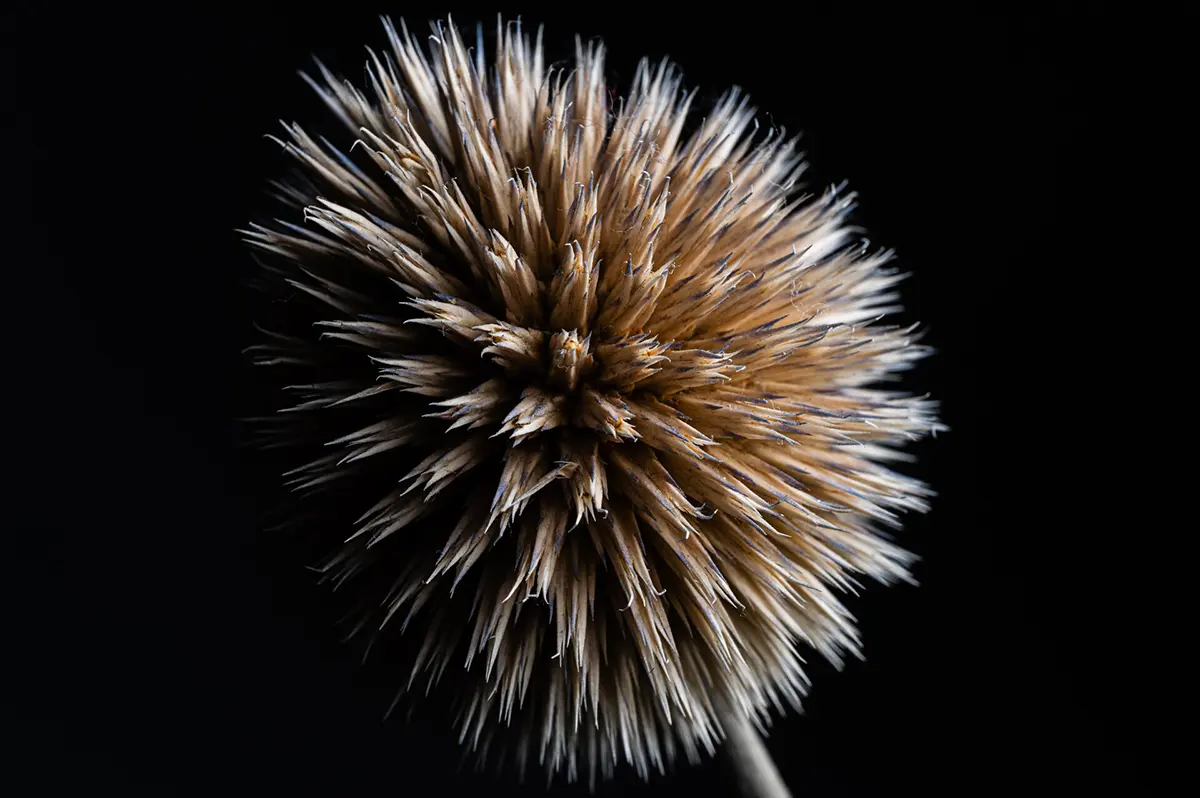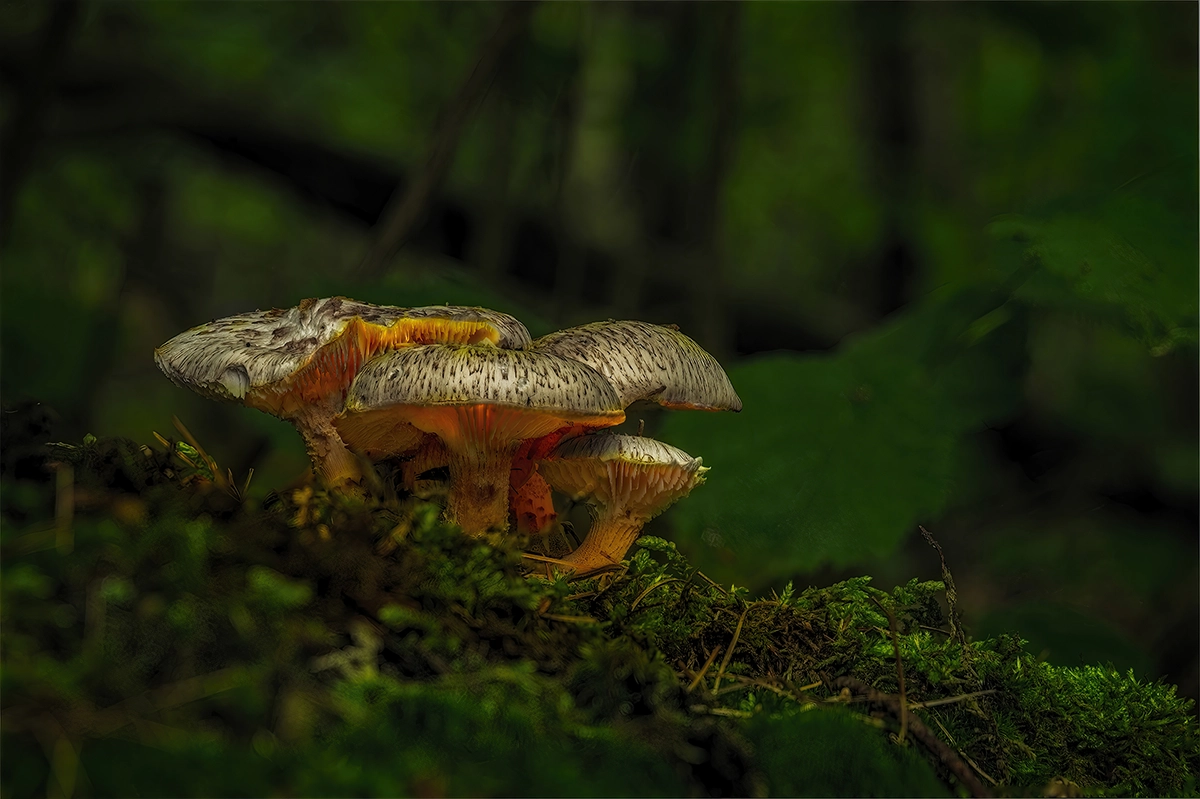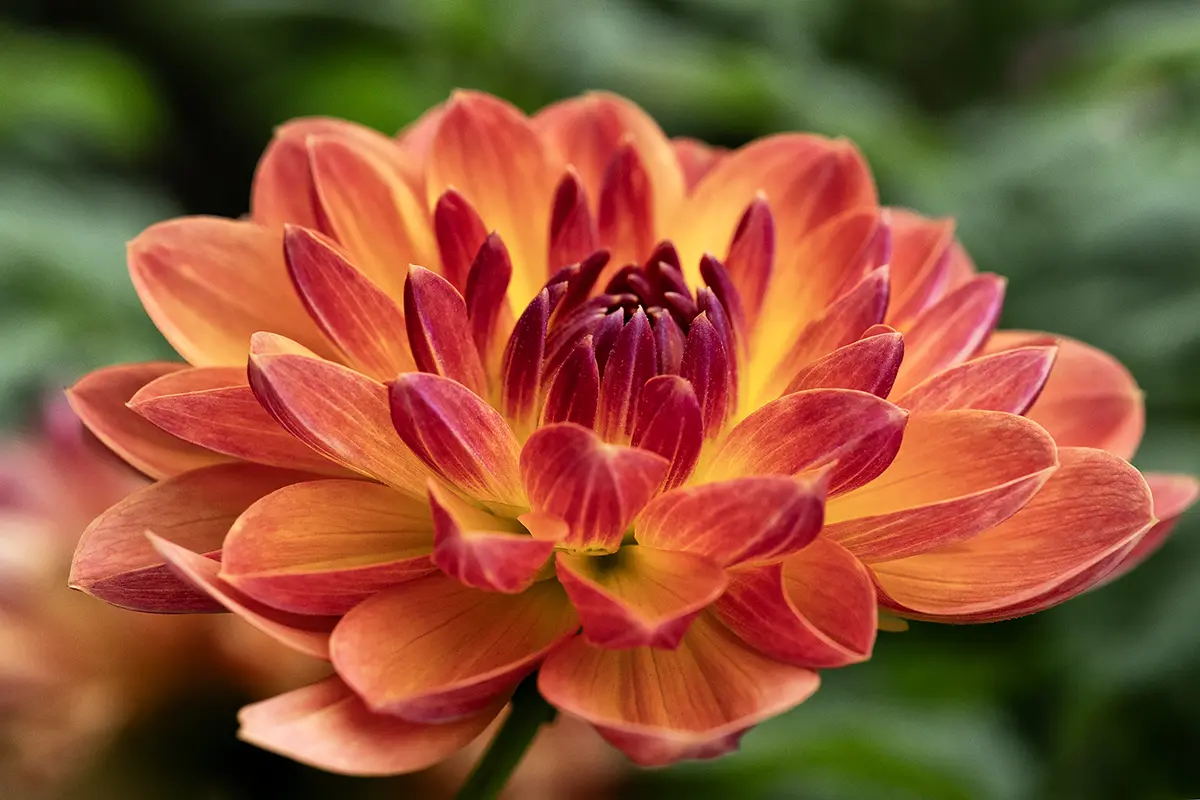
Dahlia Dreams
Ken Hubbard explores his local arboretum to capture macro flower photography with the Tamron 90mm F2.8 M1:1 lens.
Author: Jenn Gidman
Images: Ken Hubbard
Share Article
Ken Hubbard explores his local arboretum to capture macro flower photography with the Tamron 90mm F2.8 M1:1 lens.
As summer fades into autumn, Long Island’s Bayard Cutting Arboretum transforms into a kaleidoscope of color, thanks to the hundreds of dahlias in the William Wolkoff Dahlia Garden and those featured in the annual show hosted by the Long Island Dahlia Society on Labor Day weekend. For photographer Ken Hubbard, it’s a visual feast, and the perfect backdrop for taking macro flower photos with his Tamron 90mm F/2.8 Di III VXD M1:1 mid-telephoto macro lens.
“The dahlia garden at the arboretum is impressive,” says Ken. “Dahlias are one of those flowers that you can spend hours photographing and still discover something new. There are so many different colors, shapes, and sizes—some are small enough to fit in the palm of your hand, others are as big as your head. The arboretum is the ideal place to push what a macro lens like the Tamron 90mm F2.8 can do.”

For this shoot, Ken relied on the 90mm F2.8’s 1:1 maximum magnification ratio, meaning that the subject appears life-size on the camera’s sensor when shooting at that ratio. “That’s the magic of this lens,” he notes. “It allows you to get super close so you can fill the frame with just one small detail from your subject, like a petal’s edge, the center of a bloom, or a bumblebee, as shown here. That kind of magnification lets you show people aspects they might not even notice while standing right in front of the flower.”

Paired with its macro capability, the 90mm’s wide F2.8 aperture gives photographers the power to melt away distractions. “Shooting wide open at 2.8 allows you to completely drop out to an extremely soft background,” Ken says. The 90mm 12-blade circular aperture, Tamron’s first, enhances this effect by keeping the bokeh perfectly circular when shooting wide open. “You won’t end up with harsh, angular shapes—i.e., an octagonal bokeh— behind your subject,” he adds.

The constant breeze coming off the river flowing by the arboretum keeps the dahlias gently swaying. “Even the slightest movement of the flowers can throw your focus off when you’re working that close,” Ken says. To combat that, he kept his shutter speeds high—often at 1/1000 second or faster—to freeze both his own motion and the flowers’.
The 90mm F2.8’s VXD (Voice-coil eXtreme-torque Drive) linear motor focus mechanism built into the autofocus drive is also a key feature for macro photography. “The autofocus on this lens is super fast and super quiet,” Ken says. “In the past, you’d never rely on autofocus for macro work—you’d be locked on a tripod, focusing manually. But now, with the precision of subject tracking, I can handhold my camera, move around freely, and still lock-focus on exactly what I want, like on a bumblebee or praying mantis exploring the flowers.”

The 90mm F2.8’s light weight (22.2 ounces), compact size, and new features like a redesigned lens hood with a sliding window, which simplifies the use of circular polarizer or other filters, wraps up this photography package. “Before, you’d have to remove the lens hood to adjust your filter, then put the hood back on,” Ken says. “Now, you just open the little door, rotate your polarizer, and keep shooting. It’s a small thing, but it saves time and hassle when you’re in the field.”
Ken especially enjoys using the 90mm F2.8 to zoom in and create more abstract macro flower photography. “With some flowers, I’ll just focus on one curve of a petal or the center’s spiral pattern,” he says. “The 90mm F2.8 lens lets me isolate those smaller pieces, like the photo of the purple and yellow flower here. Or take that red dahlia with yellow tips—when I first spotted that, it caught my eye because it looked like flames, like a campfire. That’s why I got so close and cropped it the way I did.”
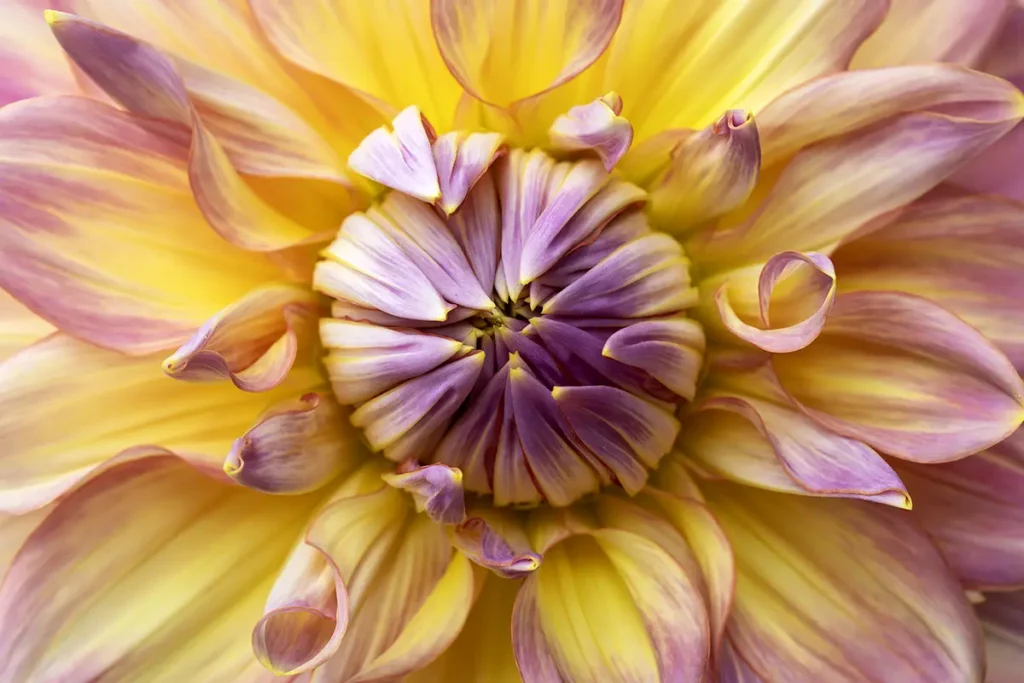
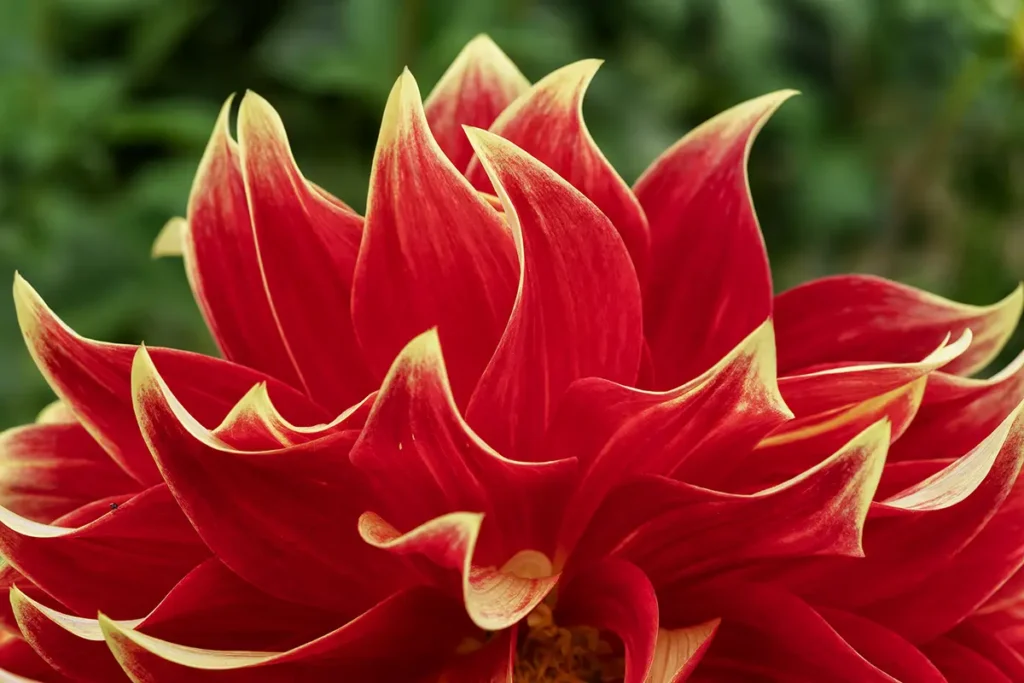
The 90mm F2.8 is also versatile enough to be used for other purposes once you’re done wandering among the flora. “It’s a great all-around lens,” Ken says. “You can shoot portraits, landscapes, or just about anything else with it.”
To see more of Ken Hubbard’s work, check out his website and Instagram.
